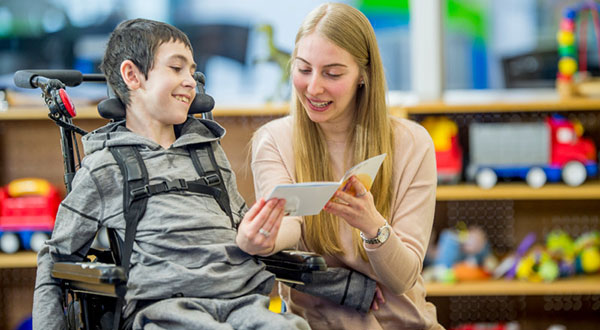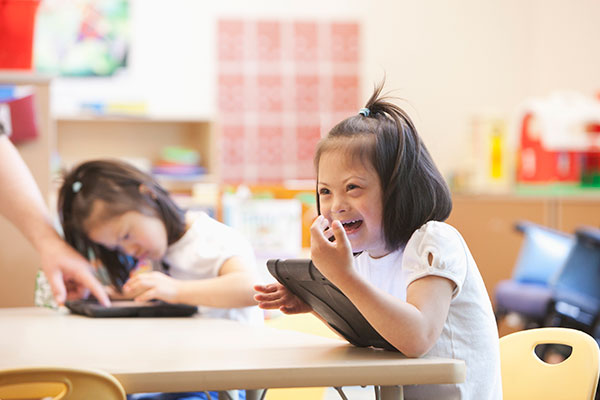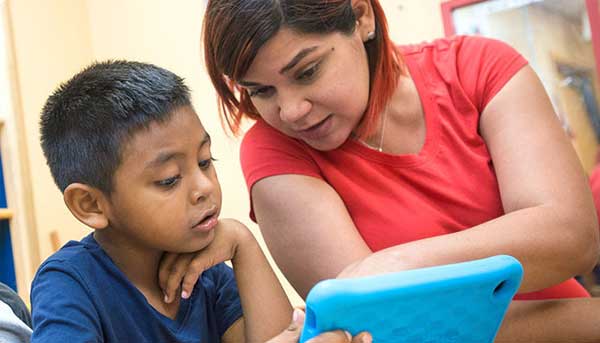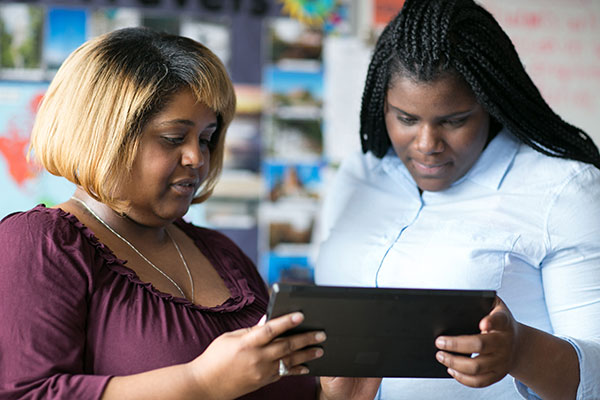November 18, 2018
RTI, MTSS, and PBIS can be confusing, especially because these terms are sometimes used interchangeably. There’s a lot of overlap, but they refer to different approaches to identifying and addressing students’ needs.
Use this blog as a cheat sheet (or a refresher) so you can feel comfortable discussing these terms with parents and guardians, colleagues, and other stakeholders—and employing them with your team throughout the year.
Let’s start chronologically.

What does PBIS stand for?
PBIS stands for Positive Behavioral Interventions and Supports. It is an evidence-based framework used in education to promote positive behavior and prevent problem behavior in schools.
PBIS is based on the principles of behaviorism and is designed to create a positive and safe school environment by teaching and reinforcing appropriate behavior, rather than simply punishing negative behavior.
When was PBIS first introduced?
PBIS was first called for in the 1997 reauthorization of the Individuals with Disabilities Education Act (IDEA). PBIS was initially a response to the exclusion of students with disabilities from educational opportunities due to behavior issues and disorders. PBIS has since shifted to a “school-wide” system that applies to all students, not only those with disabilities.
The 1997 reauthorization also provided for creating a national Center on PBIS to develop models and provide information, training, and support around PBIS to districts.

What exactly is PBIS?
PBIS is a framework that calls for actively teaching positive behaviors and implementing evidence-based preventative/responsive interventions to support students’ academic achievement and well-being.
In a PBIS framework, positive behaviors and behavior expectations are taught to students, much like math, reading, and other core subjects. Key behavior expectations (e.g., respect for self, respect for others) are selected locally, and “rubrics” for what those behaviors look like are outlined for both classroom and non-classroom settings. Time is then dedicated to teaching, modeling, and practicing these behaviors, and students are acknowledged and rewarded for exhibiting them.
PBIS calls for data-driven decision making, regular progress monitoring, and tiered evidence-based interventions when problem behaviors occur.
What are the PBIS tiers?
- Tier 1—Universal Supports/Practices: The positive behavior instruction, best practices, and positive school climate provided to all students. This tier is focused on preventing the development of new problem behaviors.
- Tier 2—Targeted Supports: The supports provided to students who are either not responding to Tier 1 supports and/or are at risk for severe problem behaviors. Students needing Tier 2 supports are identified based on data (e.g., number of problem behaviors). Tier 2 interventions are typically provided in a small-group setting.
- Tier 3—Intensive Supports: The supports provided to the small percentage of students with severe problem behaviors who do not respond to Tier 2 interventions. These supports are more individualized, targeted, and intense/focused.

What does RTI stand for?
RTI stands for Response to Intervention. It is a framework used in education to identify and provide support to students who are struggling academically or behaviorally.
Like PBIS, the RTI process typically involves three tiers of intervention, with increasingly intensive interventions provided at each tier.
What is the history of Response to Intervention?
RTI was introduced in the 2004 reauthorization of the Individuals with Disabilities Education Act (IDEA). At the time, an increasing number of students were being referred to special education with a specific learning disability (SLD). Many of those referrals were considered to be preventable if targeted, effective instructional interventions had been put in place.
The 2004 IDEA amendments did not mandate an RTI process but did adjust SLD identification requirements to now allow “a process based on the child’s response to scientific, research-based intervention.” This means that research-based interventions could be implemented prior to referring a student to special education.
The law intended that students in need of instructional support could be provided with this support in a general education setting, and not automatically referred into special education.

What exactly is RTI?
There is no universally accepted definition of RTI, perhaps due in part to the fact that the 2004 amendments to IDEA did not include funds for a National Center for RTI, the way a Center for PBIS was funded in 1997.
Broadly speaking, RTI is a framework that calls for research-based interventions to be implemented for struggling students. Most RTI models include some common attributes:
- Universal screening assessments to proactively identify struggling students
- Data-driven, early identification of students needing support
- Implementing research-based interventions that align to student needs and are tiered in intensity and/or frequency
- Monitoring student progress to assess intervention effectiveness
- Tracking the “fidelity” with which an intervention is implemented; and
- Involving parents and other stakeholders
For most districts, these efforts were primarily focused on academic supports.
What are the Response to Intervention tiers?
- Tier 1—Universal Instruction: The high-quality classroom instruction that all students receive. This tier ensures that students are not struggling due to poor instruction.
- Tier 2—Targeted Interventions: The research-based supports provided to students who are identified as struggling. Tier 2 interventions are typically implemented in small group settings.
- Tier 3—Intensive Interventions: The individualized, targeted interventions implemented for students not responding to Tier 2 supports. Tier 3 supports provide more frequent, intense, and individualized interventions. If students still do not respond, they may be referred for special education evaluation.

What does MTSS mean?
MTSS stands for multi-tiered system of support. MTSS is a comprehensive framework that is used in education to provide students with the academic and behavioral supports they need to succeed.
MTSS is a proactive approach to meeting the needs of all students, and it is designed to ensure that they receive the appropriate level of support at the right time.
When was MTSS first introduced?
The Elementary and Secondary Education/Every Student Succeeds Act (ESEA/ESSA), signed into law in December 2015, calls for a “for a multi-tier system of supports for literacy services.” The general concept of MTSS, however, has existed since at least the mid-1990s, with the work of researchers such as professor Hill Walker at the University of Oregon.

What exactly is MTSS?
MTSS is a framework with a tiered infrastructure that uses data to help match academic and social-emotional behavior (SEB) assessment and instructional resources to each and every student’s needs.
Many states and districts have developed their own definitions as they work to comply with the ESSA legislation. Even across those varying definitions, common elements emerge. MTSS is a framework for:
- Identifying students who need support
- Making data-driven decisions
- Implementing research-based interventions aligned to needs
- Monitoring student progress; and
- Involving stakeholders
Implementing MTSS strategies
Discover tools from Renaissance that help you to identify and meet every learner’s needs.
What do RTI, MTSS, and PBIS have in common?
Now that we’ve explored each term, let’s address three questions that educators, parents and guardians, and community members often ask about the relationships among PBIS, RTI, and MTSS.
#1: Are RTI and MTSS the same thing?
An MTSS is often considered an umbrella framework to encompass “whole child” data (academics as well as social-emotional behavior), combining the previously separate PBIS and RTI processes.
However, an MTSS does much more. It is a mechanism that drives system-level resources to sustainably meet the needs of all students and accelerate learning for all.
MTSS streamlines and brings cohesion to the good work and best practices that are already happening in a district so that those efforts are no longer happening in isolation.
MTSS also helps districts to fill gaps in their standard practices that might exist due to common challenges, like limited resources, difficulty collaborating, and a lack of visibility in program effectiveness.
An MTSS departs from typical RTI implementations in other ways. A few examples:
- MTSS is applied to all students, not just to struggling students. For example, MTSS calls for us to continue challenging high-achieving students.
- MTSS often includes language about collaborative, concurrent, and/or communicative supports. Here, there is an expectation that we are effectively working and communicating with all stakeholders to provide a unified support system (i.e., ensuring that our interventions aren’t at odds with other interventions, etc.).
- Many states and districts identify MTSS as a means to equity.
#2: Are MTSS and PBIS the same thing?
MTSS and PBIS are related but not the same thing. As noted above, MTSS is a comprehensive framework for supporting student success that involves the use of evidence-based practices to provide students with the academic and behavioral supports they need to succeed.
MTSS typically includes three tiers of support:
- Universal
- Targeted
- Intensive
The goal of MTSS is to ensure that all students receive the support they need to succeed academically and behaviorally.
PBIS, on the other hand, is a specific approach to behavior management that is often used as part of an MTSS framework.
PBIS focuses on promoting positive behavior by teaching and reinforcing appropriate behavior, rather than simply punishing negative behavior. PBIS includes the use of specific strategies and interventions, such as:
- Establishing clear expectations for behavior
- Providing positive feedback and reinforcement; and
- Using data to monitor and adjust interventions as needed
While PBIS is a specific approach to behavior management, MTSS is a broader framework that includes academic and behavioral supports, of which PBIS is just one component.
#3: Are RTI and PBIS the same thing?
RTI is a framework used to identify and provide support to students who are struggling academically or behaviorally. The RTI process typically involves three tiers of intervention, with increasingly intensive interventions provided at each tier.
The goal of RTI is to ensure that all students receive the support they need to succeed academically and to identify and address any learning or behavioral difficulties as early as possible.
PBIS is a specific approach to behavior management, and RTI is a broader framework of which PBIS is just one component.
Renaissance: Providing insights for MTSS success
At Renaissance, we help schools and districts support effective MTSS with our comprehensive assessment solution, which includes valid and reliable tools for universal screening and progress monitoring in reading, math, and social-emotional behavior (SEB).
We also offer eduCLIMBER, a powerful MTSS collaboration and management platform that helps you to:
- Identify students’ needs
- Monitor the effectiveness of Tier 1, Tier 2, and Tier 3 interventions
- Simplify and streamline the work of your data teams
- Advance equity in your schools
Learn more
With eduCLIMBER, you can strengthen MTSS with interactive, whole-child data for a complete picture of student and school performance. Connect with an expert today to learn more.

